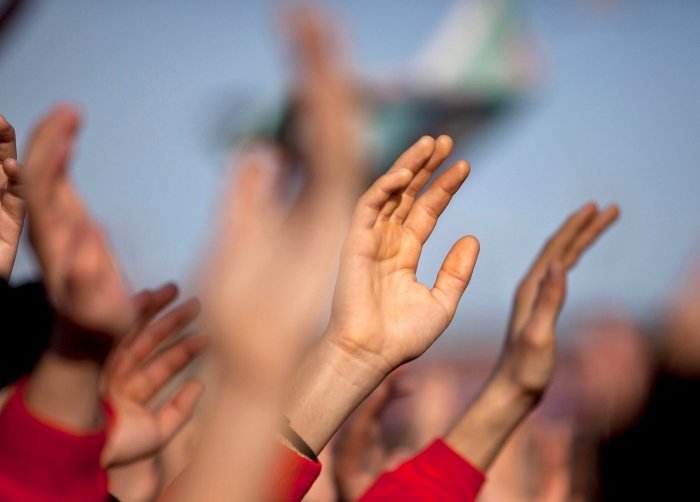Dutch trainers introduce resocialization method for juveniles in prison in Kosovo
The NHC communication team spoke with Patricia Meijer and Peggy Esajas of the Dutch youth penitentiary institution Teylingereind (Forensisch Centrum Teylingereind), who are conducting training sessions for staff of the Lipjan Correctional Center for Juveniles in Kosovo as part of the project “Improvement of Prison Conditions for Reintegration of Juvenile Detainees in Albania, Macedonia and Kosovo”.
NHC: Can you tell us about your recent experiences?
Peggy Esajas: We trained a group of social workers, correctional officers and teachers at Lipjan to use the EQUIP-methodology in their work with juvenile inmates. We are working with those staff members who work directly with the boys. These boys are locked up, but they are also children who need to grow and develop, and who will at some point return to society. EQUIP consists of four components: social skills, anger management, moral education and Mutual Help Meetings. Together, these parts ensure that the juveniles will learn social skills they can use after they leave prison.
Patricia Meijer: On the first morning of our first training in March 2014, we had to work really hard to get the people to participate actively. They are used to an education system in which the student listens and the teacher talks, whereas we encourage interaction using a lot of role-playing exercises and reflection. We needed to slow down our program and demonstrate even more exercises. This required a lot of thinking on our feet, revising our training as we went along, making sure they would not only understand the theory, but also practice the skills.
Esajas: Instruction through showing and demonstrating is a beautiful part of our method: inviting the staff to practice and stay close to who they are while doing so, without feeling ashamed or embarrassed.
Meijer: In the end we were so surprised how they picked up what we demonstrated. That was really a present from the group to us. Participants even started to ask us to publicly mention things that went wrong or could be improved. That was a big step, because we had noticed that these people were sensitive to positive feedback. So this development reassured us that we had chosen the right approach.
NHC: The penitentiary professionals you trained during the first training in March 2014 are now using their new skills and knowledge in their work at Lipjan. Do you have any idea how they are doing?
Esajas: The group we trained has started working with a selected group of detainees. We continue to coach them from a distance: we receive their reports once a month and give feedback. These reports and our answers are translated from Albanian into English and back, so it’s an elaborate process.
Meijer: As a trainer, you really have to find a way to connect your training with their reality. This wasn’t always easy. For example, when we talked about anger management, about teaching the youth to control their anger, the Lipjan staff told us: “But we really don’t have any aggression here.” Through role-playing exercises in which staff played the part of the boys, we (and they) realized that there is in fact aggression, but that it is very hard for the staff to show this to outsiders. When outsiders come visit your prison facilities, you want to show the improvements you have already achieved; you don’t want to air out the dirty laundry in public. Of course, that’s understandable when you look at the country: it’s a young country and it’s also part of their culture to show only the positive aspects. In the end, they found this anger management topic very interesting.
Esajas: When we asked the head of the correctional officers how he deals with a boy turning aggressive or getting angry, he answered that they have a sort of father-to-son conversation to smooth things out and quiet the boy down. But we go beyond resolving that specific situation: the essence of our training is to help the boy acknowledge and recognize his anger and help him control it. To prevent him from getting into trouble also when the father-figure is not around. This is a bridge we managed to build through role-playing exercises.
We were able to support the Lipjan staff and connect with them by acknowledging that we see the same behavior in our own prison, that we recognize the situations they deal with from our own experience in The Netherlands.
Meijer: The cause of the behavior may be different. In The Netherlands a boy may say: “If he didn’t want me to steal his scooter, he shouldn’t have left the key in the ignition.” In Kosovo he probably says: “My dad doesn’t have a job, but my little brother and sister still need to eat. So I go out stealing.” But the behavior is still the same: both guys go out stealing.
I think this is where it shows we are trainers who also work in a prison, when we can speak about our experiences separate from our role as a trainer. We can relate to their problems, because we had to tackle the same issues when we started using the EQUIP-method.
When we returned for the second training in June 2014, it was more coaching on the job: we observed how they worked in practice. The people we had trained clearly understood the material we had taught them and they were implementing it as we had taught them. We were positively surprised by how fast they learn and develop. So during our next visit to Lipjan we are going to work on the transfer from using the EQUIP-method only during the training sessions with the boys towards integrating EQUIP into the entire program, into the staff’s interaction with the boys in their role as social worker, correctional officer or teacher. So that in the end, EQUIP will be used throughout all daily activities with the boys, not just during that one hour a day of EQUIP-training.
NHC: What were your goals, your expectations for this training?
Esajas: You keep changing your goals as you progress, but the big goal is of course that the facility’s staff, but especially the boys themselves and society at large will benefit and that people will realize what they are capable of.
Meijer: You want to give these people something they can use to bring about changes in the correctional facility’s policy, but eventually the goal is bigger, of course: changes in society. You hope that, after their release from prison, less juvenile inmates return to a life of crime, that they will have learned to think before they act and thus make responsible choices.
Esajas: Now, the staff we trained are looking at the possibilities, not the impossibilities. They have really managed to adjust the material to their reality. They have even started training a second group of boys at Lipjan. It is obvious the people we trained have the drive, the motivation to make this a success, because they see how the EQUIP-training benefits the boys’ developmental processes. The staff’s ultimate goal is for the EQUIP-method to become a fixed and official part of the schedule at the facility. That says something about their faith and believe in what they are doing.
NHC: Is there anything you would like to add?
Meijer: Our stays in Kosovo are well-organized: the travel, the hotel, the food. Those seminars are an intense couple of days for us trainers, so being able to sleep well and not having to worry about anything is important. Everything is organized perfectly.
Esajas: Barbora [Pomsarova, the NHC project manager] is very important in our cooperation with Lipjan.
We are also grateful to our employer who gave us the opportunity to continue learning and developing ourselves and is now giving us the opportunity to use our expertise in a different country where we’ll hopefully be able to contribute something. That is something to be grateful for, but also something to be proud of.
Meijer: We have a lot of experience giving training seminars in The Netherlands, so giving this training in a different country was a great opportunity we grabbed with both hands.


